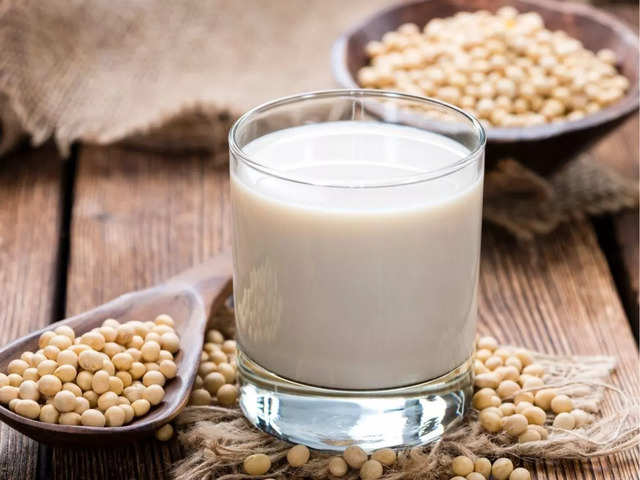Lactose intolerance is a common gastrointestinal condition that occurs when the body has difficulty digesting lactose, the natural sugar found in milk and dairy products. Many people with lactose intolerance believe they must avoid all dairy, but recent research suggests that individuals with lactose intolerance can still enjoy certain dairy products. In this article, we will explore what lactose intolerance is, its prevalence, recommended dietary options, and delicious lactose-intolerant friendly recipes.
Understanding Lactose Intolerance

Lactose intolerance occurs when the body cannot produce enough lactase, the enzyme responsible for breaking down lactose into glucose and galactose for absorption into the bloodstream. When lactose remains undigested, it can lead to uncomfortable symptoms such as bloating, gas, loose stools, and stomach pain. It is important to note that lactose intolerance is different from a milk allergy, which is triggered by the immune system.
Prevalence of Lactose Intolerance
Approximately 12% of the U.S. population experiences lactose intolerance. Studies have revealed varying prevalence rates among different ethnic groups, with around 8% of European Americans, 10% of Hispanic Americans, and 19.5% of African Americans having lactose intolerance. However, many individuals self-diagnose and avoid dairy unnecessarily, which can result in calcium and vitamin D deficiencies. It is essential to get tested for lactose intolerance to receive a proper diagnosis.
Recommendations for Individuals with Lactose Intolerance
Both the National Medical Association and a National Institutes of Health expert panel recommend that individuals with lactose intolerance try to include dairy foods in their diet. Research has shown that many people with lactose intolerance can tolerate up to 1 cup of milk, which contains approximately 12 grams of lactose. However, the amount of lactose tolerated may vary from person to person. Combining lactose-filled foods with other foods, such as Greek yogurt over butternut squash soup or shaved Parmesan cheese over a salad, can help slow down the digestion of lactose and alleviate symptoms.
Lactose Content in Common Dairy Foods
It is important to be aware of the lactose content in different dairy foods to make informed choices. Here are the approximate lactose amounts in common dairy products:
| Dairy Product | Lactose Content |
|---|---|
| 1 cup low fat or nonfat milk | 12 grams |
| 6 ounces low fat plain yogurt | 13 grams |
| 6 ounces low fat or nonfat Greek yogurt | 4 grams |
| 1/2 cup low fat cottage cheese | 3 grams |
| 1 ounce sharp cheddar cheese or Swiss cheese | < 1 gram |
While yogurt contains 13 grams of lactose, the live and active cultures present in yogurt help break down some of the lactose, making it easier to digest. Greek yogurt, in particular, is a great choice for individuals with lactose intolerance as much of the lactose is removed during the straining process. Hard cheeses like cheddar and Swiss are also lactose-intolerant friendly, containing less than 1 gram of lactose per ounce.
Lactose-Free and Alternative Dairy Options

For those who prefer to avoid lactose altogether, lactose-free milk and dairy products are readily available in the market. These products are treated with lactase enzyme to break down lactose before consumption. Additionally, there are alternative milk options such as almond, hemp, soy, and rice milk. However, it is important to note that these alternatives may not provide the same level of nutrients as milk and dairy products.
Delicious Lactose-Intolerant Friendly Recipes
Contrary to popular belief, individuals with lactose intolerance can still enjoy a wide range of delicious dishes. Here are a few lactose-intolerant friendly recipes to tantalize your taste buds:
1. Lactose-Free Milk-Braised Shoulder
This recipe features a succulent 3-pound shoulder braised in lactose-free milk. The milk tenderizes the meat and imparts a rich flavor without causing discomfort for those with lactose intolerance.
2. Paneer Cheese made with Lactose-Free Milk
Paneer, a popular Indian cheese, can be easily made using lactose-free milk. It can be used in various recipes, adding a creamy and protein-rich element to your meals.
3. Guacamole with a Twist
For a unique take on guacamole, combine pureed cottage cheese and avocado. This lactose-intolerant friendly version of guacamole offers a creamy texture and a boost of protein.
These are just a few examples of the endless possibilities for lactose-intolerant friendly recipes. By exploring different ingredients and cooking techniques, individuals with lactose intolerance can continue to savor a wide variety of flavors.
Conclusion

Having lactose intolerance doesn’t mean you have to completely avoid dairy. With the right knowledge and choices, individuals with lactose intolerance can still enjoy dairy products in moderation. It is essential to get tested for lactose intolerance and consult with a healthcare professional or registered dietitian to determine the best approach for your specific needs. By incorporating lactose-intolerant friendly recipes into your diet, you can continue to savor the culinary delights that dairy has to offer. Cheers to enjoying dairy without discomfort!
Hungry for more? Reach out to us at [email protected] with your questions, concerns, and feedback.
Toby Amidor, MS, RD, CDN, is the owner of Toby Amidor Nutrition and the author of the forthcoming cookbook “The Greek Yogurt Kitchen” (Grand Central Publishing 2014). She consults and blogs for various organizations, including FoodNetwork.com’s Healthy Eats Blog and Sears’ FitStudio.
